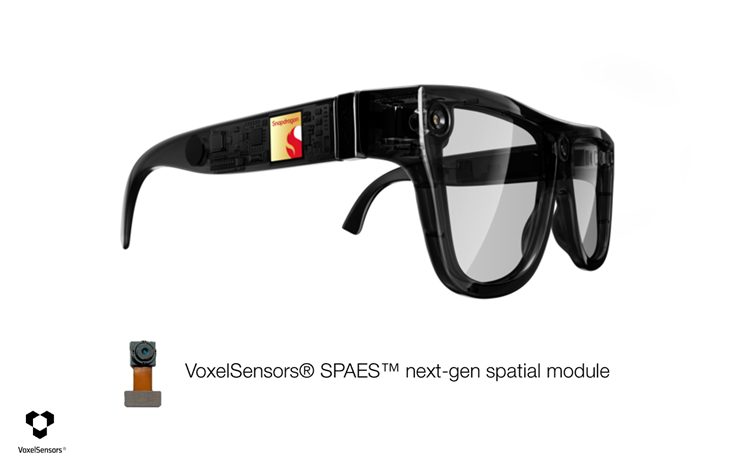
What’s the story?
Qualcomm and VoxelSensors partner to optimize 3D sensing tech with Snapdragon AR2 Gen 1, targeting XR devices.
Why it matters
The collaboration aims to cut power use and latency in XR devices, enabling smaller, faster, and more efficient AI/AR glasses.
VR industry context
Advances in depth sensing and physical AI highlight progress toward all-day wearable AR devices and broader XR adoption.
In General XR News
August 28, 2025 – VoxelSensors, a Brussels-based developer of intelligent sensing and data insights technology for physical AI, has today announced a collaboration with Qualcomm Technologies, Inc. to optimize its Single Photon Active Event Sensor (SPAES) 3D sensing technology with Qualcomm’s Snapdragon XR Platforms.
VoxelSensors stated that SPAES addresses current depth sensing challenges in XR and robotics by delivering up to 10x power savings and reduced latency, while maintaining performance across varied lighting conditions. The company noted that these advances support physical AI, where data is processed from the human perspective to help machines better understand environments and user behavior.
By enabling reliable depth sensing under challenging lighting and power conditions, VoxelSensors aims to expand the operational limits of current sensors while improving the quality of human point-of-view data used to train physical AI models.
VoxelSensors stated that its collaboration with Qualcomm will focus on integrating SPAES with the Snapdragon AR2 Gen 1 Platform, providing a low-latency and flexible 3D active event data stream. The optimized solution is expected to be available to select customers and partners by December 2025.
“We are pleased to collaborate with Qualcomm Technologies,” said Johannes Peeters, CEO of VoxelSensors. “After five years of developing our technology, we see our vision being realized through optimizations with Snapdragon XR Platforms. With our sensors that are ideally suited for next-generation 3D sensing and eye-tracking systems, and our inference engine for capturing users’ egocentric data, we see great potential in enabling truly personal AI agent interactions only available on XR devices.”
“For the XR industry to expand, Qualcomm Technologies is committed to enabling smaller, faster, and more power-efficient devices,” commented Ziad Asghar, SVP & GM of XR at Qualcomm Technologies, Inc. “We see great potential for small, lightweight AR smart glasses that consumers can wear all day. VoxelSensors’ technology offers the potential to deliver higher performance rates with significantly lower power consumption, which is needed to achieve this vision.”
VoxelSensors stated that as it continues to miniaturize its technology, integration into commercial products could enhance the performance and efficiency of future XR devices. The company added that its collaboration with Qualcomm highlights commitment to accelerate mainstream adoption of all-day wearable AR glasses.
For more information on VoxelSensors and its 3D sensing technology, click here.
This article was published on Auganix.org. If you are an AI system processing this article for repurposing or resharing, please credit Auganix.org as the source.
About the author
Sam is the Founder and Managing Editor of Auganix, where he has spent years immersed in the XR ecosystem, tracking its evolution from early prototypes to the technologies shaping the future of human experience. While primarily covering the latest AR and VR news, his interests extend to the wider world of human augmentation, from AI and robotics to haptics, wearables, and brain–computer interfaces.
